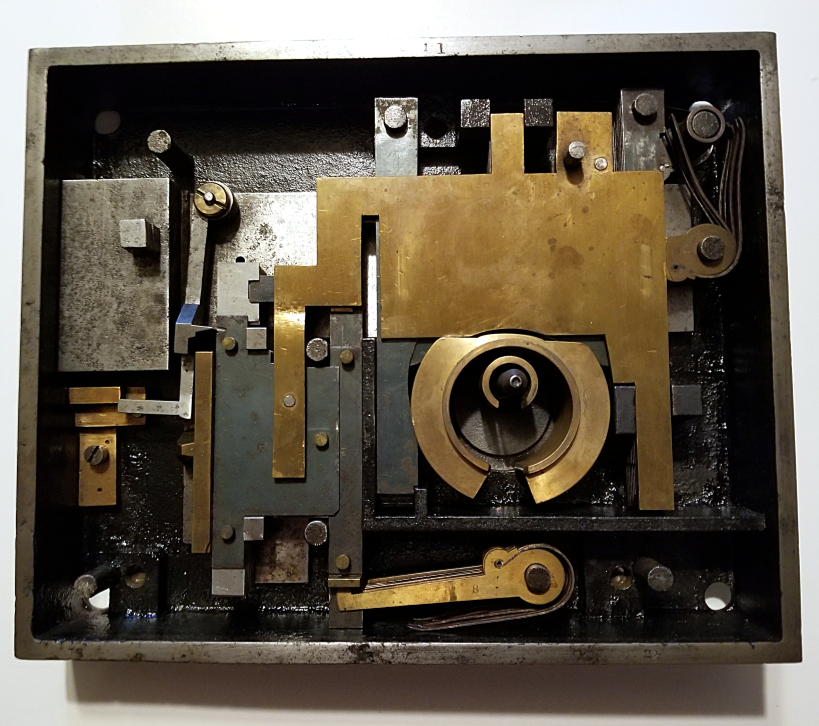Newell Parautoptic Lock – 1851
Robert Newell had a few patents, 944 in 1838, 3,135 in 1843, and 3,747 in 1844, before inventing this iconic lock in 1851. Arguably one of the most famous American safe locks of it’s time, this lock introduced the concept of re-keying without needing to re-order the levers. The lock is capable of adjusting its setting to match the key. Simply re-arrange the key bits however you would like prior to locking, then lock. It really is as simple as that to change the key. Then the owner of the key could re-scramble the key to their heart’s content and render it almost impossible for a would-be thief to break in (Well, until Linus Yale picked it. Read that story here.).
This lock was termed the New American Permutating lock, better known as the Parautoptic lock today. Parautoptic comes from Greek meaning “concealed from view.” When the key is turned, the front brass plate turns as well hiding the internal levers from view. This added feature further complicates picking.
This particular lock example is dated 1857 and utilizes a key with 8 bits (corresponding to the 8 changeable levers. The key for this lock is the left-most example in the below image). Examples are known to have been made with as few as 6 (the most common) and as many as 15 (for exhibitions) changeable bits, though the largest known surviving non-exhibition lock utilizes 10 bits. Some keys were made with less than 6 bits as seen below, but those still use at least 6 levers. These key examples illustrate a common practice at the time. In exchange for a reduction in security, keys could be made with less or no changeability at a reduced price. Fixed keys could also be created for lower tier employees to utilize on a day to day operation with the lock set to a different combination with the master changeable key overnight.
The internal mechanism is complex in its craftsmanship and function. See these three videos (not published by the curator of this website) for a more in-depth look at the lock’s function. These videos are of the British version made by Hobbs, which functions in virtually an identical fashion.
Video One by evva3ks
Video Two by Paul Prescott
Video Three by Paul Prescott

The left key goes to the lock seen above. The one to the right of it is an example where some of the bits are changeable and some are fixed. Originally, each key came with 2 extra bits of different length for added variability. An example with the original extra bits is seen third from the left. This key us labeled US. The example on the right is one of the 10 bit versions. As can be seen from the photos, not all of the keys were made to the same size, highlighting their handmade nature.


